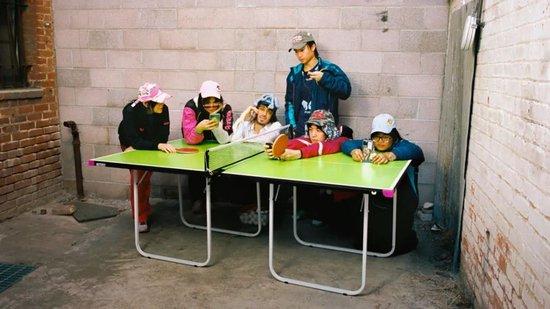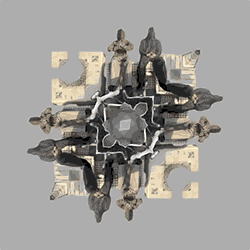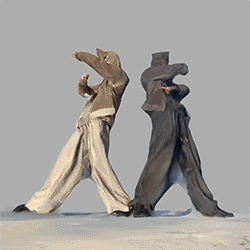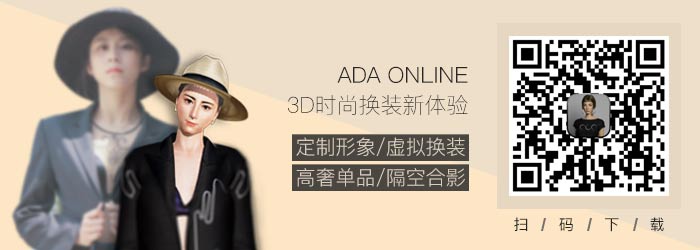Original title: In addition to "Little Tokyo Zhuoqiu", you need to pay attention to these new Japanese brands
Reprinted from: 1626 Selected Trends
As a place of art with countless minority thoughts and avant-garde design, Japan has continuously injected fresh blood into the field of fashion trends in recent years, no matter NAME Poliquant, Meanswhile, Sulvam, tac: tac, Lastframe, etc., all make people have a unique charm that is hard to refuse.
So today, we also select three other new Japanese brands that deserve your attention recently to see the popular appearance under the new Japanese forces.
Little Tokyo Table Tennis
Little Tokyo Zhuoqiu/Via i-D
Little Tokyo Table Tennis, perhaps we are still unfamiliar with this name, but its highly recognizable 'Little Tokyo Zhuoqiu LTTT' logo cap has been frequently seen on a number of European, American and Japanese bloggers in recent years, even in some club scenes.
In addition to hats, LTTT's messenger bags and headscarves are also popular items of the brand. Their simple but unique graphic design and rich and interesting color combinations make them quickly popular with a large number of fashion lovers.
Little Tokyo Zhuoqiu/Via i-D
Little Tokyo Zhuoqiu/Via LTTT
@aikojima & @Straighthoney / IG
@jjjjeenew & @geneevre / IG
Little Tokyo Zhuoqiu LTTT was founded by Jiro Maestu in 2021 in the United States. It is not a Japanese brand in the strict sense, but because of Jiro's Japanese origin and the Asian foundation of the whole brand, LTTT and Japan can be said to be connected all the time.
Just like the Tokyo Table Tennis in its name, table tennis culture flows deeply into the blood of the brand. Instead of being called a clothing brand, it seems more appropriate to describe it as a table tennis club.
Founder Jiro Maestu/Via Gauchoworld
Little Tokyo Zhuoqiu/Via GOAT
'Although the table tennis culture is so huge in Asia, for the first generation, the second generation and the third generation of Asian Americans, the influence of table tennis is not so great. As the fourth generation of Japanese Americans, I hope to bring my love for this sport to a community group that can have close ties with me '. In an interview with i-D Magazine, Jiro recalled his original intention of founding LTTT.
Now, LTTT will hold a table tennis competition every Tuesday evening in the community center of Takeshita Ishizaki Museum in Los Angeles. A large group of local young people will gather here to watch the game. You can see Club Kids with tattoos, Instagram bloggers with personalized clothes, hospital nurses and street vagrants. Anyone can go to participate, And all fans at different levels can find their own suitable rivals.
Small Tokyo Zhuoqiu's regular activities every Tuesday/Via Allison
Different from the usual mini games, the activities organized by LTTT can be described as full of laughter and sweet music. Everyone talks and makes friends with each other through their common love for table tennis. Although the community group is growing every week, it still makes people feel that it is a close and warm family.
'What makes you linger?' When a member of the club was asked why he is so keen on LTTT, he replied, 'After playing table tennis for three hours, you can forget any external pressure. It's like a dream. You hope it will never end. '
Little Tokyo Zhuoqiu/Via i-D
Little Tokyo Zhuoqiu/Via LTTT
At the same time, Jiro is also spending more and more energy on creating the peripheral items of LTTT, including representative hats, scarves, knitted bags, and Vintage modified jerseys. He wants to let more people know about Little Tokyo Zhuoqiu LTTT through these visual elements with memory points.
Rooted in Los Angeles, USA and Tokyo, Japan, the world printed with LTTT seems to have gradually spread around the world.
Little Tokyo Zhuoqiu piece/Via LTTT
Yoko Sakamoto
Yoko Sakamoto / Via Fashion-Press
Yoko Sakamoto, the designer brand of the same name, was founded by Yoko Sakamoto in 2016. She majored in fashion design at Kobe University of Arts and Engineering. She was tempered by the traditional fashion system, and after graduation, she went to a local fabric factory in Japan to explore and understand the essence of the presentation of various fabrics. She is a truly professional fashion designer.
It is most appropriate to describe Yoko Sakamoto's ready-made clothing series with 'basic style full of details'. Yoko Sakamoto is committed to integrating the natural essence of fabric into clothing, taking Japanese craftsmanship and manual details as the core concept of the brand, and paying great attention to comfort in the actual wearing process.
Yoko Sakamoto 2023 SS/ Via Fashion-Press
In an interview with the media, Sakamoto said that she hoped to design a piece that people can wear for a long time and want to wear all the time. "Don't waste design, but be close to the essence of design.". It is not difficult to find that the visual impact of Yoko Sakamoto's clothes is not so strong at first sight. There is no distinct recognition, and even it is difficult to find the brand logo.
However, the brand always presents a unique atmosphere of natural comfort and Japanese style quietness. The upper body effect of its silhouette looks so relaxed and casual, which can not only be relaxed to a proper degree without procrastination, but also be streamlined to the right extent.
Yoko Sakamoto / Via Fashion-Press
Of course, detail carving is the best part of Yoko Sakamoto. Thanks to manual sewing and dyeing, most clothes have some attractive traces of retro, which gradually builds a quiet aesthetic system unique to Yoko Sakamoto, always exuding the texture charm of the fabric.
Just like the tannin part of the brand's spring summer 2023 series, different thicknesses of warp and weft yarns are used to create a wide visual effect while ensuring a light and soft sense of wearing. The denim fabric itself is also full of ancient charm after special treatment.
In the weaving part, we found a weaving factory with a long history and woven it with old style shuttle looms. It feels soft and fluffy. After dyeing and biological processing, the cloth presents a different color as if it had been baptized by years. The more you wear it, the more you can appreciate its color changes over time.
Yoko Sakamoto 2023 SS/ Via Fashion-Press
In the autumn and winter of 2022, the stand collar coat adopts a loose shoulder shape, and the water washing treatment makes it permeated with a classical and dignified atmosphere, and the surface has delicate wrinkles.
Wool suits are also found in the British local fabric with elastic and high thermal properties. This tweed fabric has rich and three-dimensional colors, and even if it is worn in sets, it will not lose its eye-catching place.
Yoko Sakamoto 2022 AW / Via Fashion-Press
If you like this style, you can turn to Yoko Sakamoto's last season's Lookbook. Their styling and matching skills are worth your reference.
JIAN YE
JIAN YE / Via Tanase
JIAN YE was born in 2021. Sugeno, the founder and designer, is a Japanese of Chinese origin, and uses his Chinese surname as the brand name.
This new fashion designer, who graduated from Vantan Design Institute in Japan, pays particular attention to the game, functionality and Asian style of clothing, embodies various experimental ideas in his design, and presents them through 3D scanning data, bitmap images and other unique ways, which quickly attracted the attention of millennial fashion lovers, It was also reported by Sabukaru and other media.
Visual presentation/Via Jian YE
The "Matagi Hunter" of the latest autumn and winter 2023 series launched by JIAN YE draws inspiration from the culture of the same name. Japanese hunters will go deep into the mountains to hunt bears and other wild animals in the mountains with their own hunting skills. The designer raised a question in the design process, 'What kind of clothes will Matagi hunters wear today?'.
The whole series is divided into two parts: 'HUNTER' and 'RUNNER'. The clothes of the former are characterized by functional elements, such as the closed eyelet design on the hunting jacket hood, which refers to the fighting state of Matagi hunters when they use guns to aim, and the reflective piping on pants is to avoid accidental injury between companions. While RUNNER emphasizes the mobility and technical fabric of the piece.
HUNTER / Via JIAN YE
RUNNER / Via JIAN YE
Autumn and Winter 2022 'Z H. U 'has surprised many fans. Considering the pronunciation of the brand logo image' Zhu 'of JIAN YE, the designer's family name and the Chinese phonetic alphabet of pig, it can be said that the naming of ZHU as the series is very suitable.
The overall shape is presented around the costumes of the special forces, but because today's pigs have lost their original tusks and fighting instincts, the costumes actually do not use hard core elements such as camouflage, but use a color scheme like bright yellow, which is fearless of danger.
‘Z. H.U’/ Via JIAN YE
As for 'OXIDIZED BLOOD' in spring and summer 2022, it is also full of highlights. This season's inspiration comes from 'horseshoe crab', one of the oldest living creatures on the earth. Sugeno also specially studied the ecology and body structure of horseshoe crab and incorporated it into the design details.
The dark blue and brown green colors are derived from the oxidized blood of the horseshoe crab in the air and the color of the horseshoe crab shell, as well as the deconstructed waistcoat that is divided into front, back and tail parts according to the body of the horseshoe crab, and the 12 hole T-shirt designed according to the number of legs of the horseshoe crab, which is quite ingenious.
‘OXIDIZED BLOOD’ / Via JIAN YE
'OXIDIZED BLOOD' detail/Via Jian YE
In addition to the three brands mentioned in this article, such as STEIN, founded by Heiichiro Asakawa, PERVERZE, and CLESSTE, which are popular with millennials, are all potential Japanese brands that should not be underestimated.
The fashion industry needs to continuously inject fresh blood, and also expects these rising stars to present a different landscape.

















































































































































